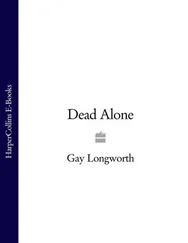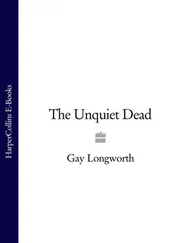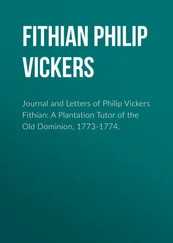Archaeologists have unearthed evidence of homes and artefacts more advanced than those found on the earlier site at Talyanky, and with iron and copper objects as well as pottery. These settlements consisted of typically fifteen or twenty dwellings, each equipped with a kitchen and living room, in which a variety of goods has been found — axes, sickles, fish-hooks, needles, jewellery and, not least, weapons: axe, spear and arrow heads, and daggers. Some of the artefacts had been made elsewhere. From this, archaeologists have deduced that the inhabitants had trading contacts not only with peoples to the north, where some of the jewellery came from, but also with the Urals, which was a source of iron ore, and towards the Caucasus and Crimea across the treeless prairies where feather grass and wormwood grew.
Despite these developments, and despite increasing sophistication in both their material life and their social organization, the proto-Russians could not yet be said to possess a civilization. Civilization was a preserve of warmer climes, where productivity was greater, population denser, and society more complex. So, in examining the development of what was to become Russian civilization and in enumerating the causes, the most prominent place must be accorded to global warming.
Some 900 years before the Christian era, average temperatures began to rise again. So did the rainfall (or snowfall). This trend, which culminated in what is known as the ‘little climatic optimum’, was to continue with only minor interruptions for over 2,000 years. It created the conditions in which the Roman Empire was to develop; it also laid the foundations of Europe’s medieval glory. Out of warmth grew riches. Some pale reflection of such prosperity was seen even in the less-favoured peripheries, and these provided the backdrop for developments among the east Slavs. In particular they prompted the development of more complex settlement patterns and of northward expansion into the forest zone.
Rather than simply counting village settlements consisting of anything from four households to twenty, archaeologists consider the development in this period of clusters of five to fifteen villages spaced between 12 and 18 miles apart to be significant. These clusters, they tell us, suggest some form of tribal organization. Furthermore, most of the larger villages provided a social focus of some kind, whether a smithy to supply precious iron tools or fittings, a shrine for an idol, or simply fortifications which could provide shelter to tribal members under attack. As time passed, these more important villages were more often sited at the confluence of rivers and were progressively better fortified, with earthworks and wooden palings. These protected settlements represent the birth of towns, which were essentially tribal headquarters — places from which a leader and his aides would organize defences, the collection of food surpluses and, if and when the volume of trade warranted it, the collection of duties too. 17
By the eighth century CE this primitive Russia had been ‘discovered’ by outsiders, and it was they who first put the Russians on the map. Trade had prompted the interest. This Russia was rich in honey, wax and tallow, for which there was growing demand. It was also a region where furs could be had cheaply — and, which were still more valuable, slaves. A quickening commercial tempo helps to explain coin hoards that have been found, and that many of these comprised Islamic silver coins dating from the seventh century testifies to the fact that Russia was already becoming a commercial staging post between the Orient and western Europe. They are found in their greatest concentrations in the regions of the upper reaches of the rivers Don and Dnieper and along the southern and western coasts of the Baltic, but there were also impressive concentrations in what is now central Russia. 18
At the same time, the pace of forest colonization from the south quickened, aided by the development around the year 800 of the hardy bread grain which was to become Russia’s staple, the foundation of the healthy Russian diet and of its remarkable cuisine — winter rye, a grain which has generated a great deal of Russian lore. 19This fast spread of population to the north suggests that population was outrunning food production, and the first signs appear suggesting that cities and even states were in the process of formation.
The first evidence of social associations larger than the tribe points to tribal unions. The names of some of these have reached us thanks to the earliest Greek and Roman sources on eastern Europe. Among these were the Krivichie tribes of what is now west Russia; the Slovenie and the Viatichi to the north and east of them respectively; and the Derevlians (or ‘old settlers’). The Severiane and the Poliane lived in the territory we now know as Ukraine, the last-mentioned in the neighbourhood of what was to become its chief city, Kiev. These tribes all shared the same Slavonic language. Nevertheless, they did not constitute a state, even though centuries later their descendants were to speak differentiated, albeit similar, languages and populate three different nation states: Ukraine and Belarus, as well as Russia. Nor were the tribes to remain settled in the same areas. Archaeologists have traced significant movements. The Slovenie moved east and south in the late 8oos, while some northward movement by the southern tribes has been noted. 20
Cities in Russia owed their origins to two very different developments. On the one hand there was the headquarters of the super-chief, head of a tribal confederation, its organizer, defender and (insofar as he extracted income from it) oppressor too. This sort of city was a military and administrative centre which acted as a magnet for people simply because men who took decisions and exercised power were to be found there. The other kind of city was in origin a commercial centre, a defensible point along a route which joined two or more emporia. This helps to explain the different settlement pattern in northern Russia, where strongholds were established without a populated hinterland capable of supporting them, by contrast to Russian settlement in the south.
Archaeologists argue that strongholds — most of them positioned by important river crossings and often on a periphery of any settled region in order to control trade routes and tax the value passing through — preceded settlements in northern Russia. But the distinction soon became theoretical rather than practical, because the surplus goods the super-chiefs had to sell attracted merchants, and the commercial centres needed both craftsmen and protection. The functions of the city-in the-making soon became mixed. And the creation of cities and the advent of merchants operating over long distances implied the end of isolated, tribal life. It also indicated some exposure to outside influences, heralding a new kind of life with a potential for civilization. However, it also implied the loss of that self-contained, self-supporting realm of blood-related family rooted in a place (the mythic realm of which all nationalists dream), and threatened the old beliefs associated with the old ways of life.
Russia’s famous store of fairy tales includes some that date from ancient times, and these provide our only evidence of the spiritual world of the Russians before it was influenced by outside agencies, including Christianity. Unfortunately, the provenance of these traditions is inextricably bound up with the early history of the Christian Church in Russia, which was intent on eradicating them and the magic beliefs many of them reflected. Some dimly reflect real historical heroes and events and must be relatively late inventions, but others are more ancient, and it is reasonable to infer that some, at least, have pre-Christian origins. Such tales reflect the natural world the early Russians inhabited. They stress the importance of water to life and death to a greater extent than the folklore of other peoples, and purport to explain such mysteries as the placid river which hides dangerous rapids, the sudden, death-dealing storm, the relative who becomes a burden or who turns nasty (as Little Red Riding Hood’s nice grandmama turns into an all-devouring wolf).
Читать дальше





![Stephan Orth - Behind Putin's Curtain - Friendships and Misadventures Inside Russia [aka Couchsurfing in Russia]](/books/415210/stephan-orth-behind-putin-s-curtain-friendships-a-thumb.webp)





